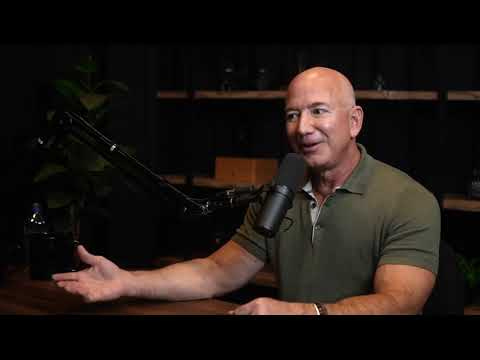The Decision-Making Frameworks That Made Me Quit My Job
How do you make decisions? Go off of gut feel? Ask your friends what to do?
Here are two decision-making frameworks to use before making your next big decision.
—
A few weeks ago, I had to make a difficult decision. One so important, it felt like it would change the trajectory of my life.
The decision:
- Should I leave my job and take a new role?
- Or should I stay and see what happens?
*I know, I know – most people have made this decision many times (myself included).*
I don’t mean to be dramatic.
In the past, this decision has been easy for me. I would leave a job for more pay and a higher title at a better company.
But this time, it wasn’t so obvious.
I was looking for long-term growth, more opportunities, and more career potential, not for salary or title.
This wasn’t a comparison I could easily make on a spreadsheet.
I had to decide between the known comfortable place and the unknown (possibly uncomfortable) place.
And once I finally got a new job offer, I struggled to decide.
Then, I found Jeff Bezo’s decision-making framework
While exploring YouTube's rabbit holes (as I do daily), I found a clip of Jeff Bezos discussing decision-making.
Bezos dropped an absolute gem:
“Most decisions are two-way doors. If you make the wrong decision, you walk out, spend some time there, you can walk back in and pick another door. Some decisions are so so consequential, so important, so hard to reverse, they really are one-way door decisions. You go in that door, you’re not coming back. Those decisions have to be made very deliberately, very carefully.”
After watching that clip, I tried to apply this Bezos quote to my unique circumstance.
Real quick — we all do that, right? Find something online and immediately try to fit it into our current situation. It can’t just be me.
Anyway, after watching this, and thinking about it for a while, it became clear to me:
This job change was a “two-way door” decision.
I wasn’t taking a blood oath with The Gambino Crime Family (sounds cool though). I wasn’t signing away my right to find another job in the future.
This decision was reversible – I could turn around and try a new door if it didn’t work out.
Is this a foolproof framework? No. But it helped me be more objective. Plus, since I’m somewhat risk averse, it helped me feel comfortable taking the leap.
So next time you’re stressing about a decision, ask yourself “Is this a one-way door or a two-way door decision?”
Few decisions in life are one-way-door decisions. Other than dying, most things are pretty reversible.
Then I found Sam Oven’s Long-Term Thinking Lesson
Even though I had decided this was a two-way door, it wasn’t enough for me to pull the trigger.
There were a bunch of unknown consequences that would occur if I took the new job.
- What if I put myself on a path that set me back 3 years, led to a ton of stress, and got me no further?
- What if in 3 years, I look back and realize this job was no better and I was just bored?
It was clear that I needed to map out all possibilities and truly understand the consequences.
Just a few days after watching the Bezos interview, I stumbled upon (you guessed it) another timely YouTube video.
This time, by Sam Ovens, the founder of Skool, titled “Long-Term Thinking, 2nd Order Consequences & Effect Horizons.”
Hold up… how is YouTube doing this? It’s like they know exactly what I need right when I need it…
In this video, Sam talks about the importance of understanding “second-order consequences,” AKA the downstream consequences of decisions.
He shows how each decision you make has a ripple effect that goes far beyond the surface-level decision.
For illustration, he used an example of purchasing a new TV for your home.
When purchasing a TV, the average person will only think about the damage to their bank account compared to the satisfaction of watching TV.
Once that calculation is complete, they will decide whether or not to purchase the TV. They think the cost is the only consequence.
What most people see:
But they’re missing something entirely – the downstream consequences that will occur from the purchase.
A chain of events will be set off that goes far beyond the $500 they sacrificed to get the TV.
These are the 2nd, 3rd, 4th, etc. order consequences.
Here’s what they don’t see:
And while this is overdramatized, you get the idea.
*To clarify – I have a TV in my apartment and I am not taking it down, no matter what Sam Ovens says!*
I realized I needed to look far beyond the immediate effect of leaving my job.
Instead of looking at first-order consequences like:
Salary
Day-to-day tasks
Immediate job title
I needed to look at downstream consequences like:
Career growth
Networking
Learning opportunities
Title in 5,10,15 years
So I started to map out the following:
Where will my career be if this goes well?
Where will my career be if this goes poorly?
If I stay, what are the potential downstream consequences?
If I leave, what are the potential downstream consequences?
I created two streams — one for good outcomes and one for bad outcomes. Then I look at the results.
Which led me to my decision…
And I decided that:
The consequences of leaving far outweighed the consequences of staying.
So I left.
- Zack
Hey! If you enjoyed this post, be sure to subscribe. Every couple of weeks, I share my thoughts on life, business, and marketing.
I hope you’ll join me.
P.S - I will not spam you, I promise :)





